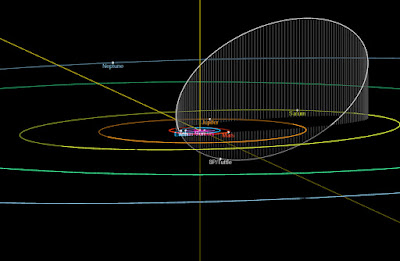The Ursid Meteors are expected to peak early in the morning of Wednesday 22 December this year, with the shower being potentially visible to some extent between Friday 17 and Sunday 26 December. The extent of the shower is variable, some years producing over 100 meteors per hour at its peak, others less than 10. This years shower falls slightly after the Full Moon on 19 December, so viewing may be impaired, as glare from the Moon can hinder the viewing of meteors. The meteor shower gets its name from the constellation of Ursa Minor, in which it appears to originate.
Meteor streams are thought to come from dust shed by comets as they come close to the Sun and their icy surfaces begin to evaporate away. Although the dust is separated from the comet, it continues to orbit the Sun on roughly the same orbital path, creating a visible meteor shower when the Earth crosses that path, and flecks of dust burn in the upper atmosphere, due to friction with the atmosphere.
How the passage of the Earth through a meteor shower creates a radiant point from which they can be observed. In The Sky.
Comet 8P/Tuttle has an orbital period of 4972 days (13.6 years) and a highly eccentric orbit tilted at an angle of 55.0° to the plain of the Solar System, that brings it from 1.03 AU from the Sun at closest perihelion (103% of the distance between the Earth and the Sun) to 10.4 AU from the Sun at aphelion (10.4 times as far from the Sun as the Earth or slightly outside the orbit of the planet Saturn). As a comet with a period of less than 20 years, 8P/Tuttle is considered to be a Jupiter Family Comet.
This means that 8P/Tuttle has occasional close encounters with the Earth, with the last thought to have happened in January 2008 and the next predicted in December 2048. The comet also has occasional close encounters with the planets Jupiter, which it last came close to in December 1995 and is next predicted to pass in September 2078, and Saturn, which it last came close to in February 1930 and is expected to pass again in February 2107. Objects which make close passes to multiple planets are considered to be in unstable orbits, and are often eventually knocked out of these orbits by these encounters, either being knocked onto a new, more stable orbit, dropped into the Sun, knocked out of the Solar System or occasionally colliding with a planet.
See also...











